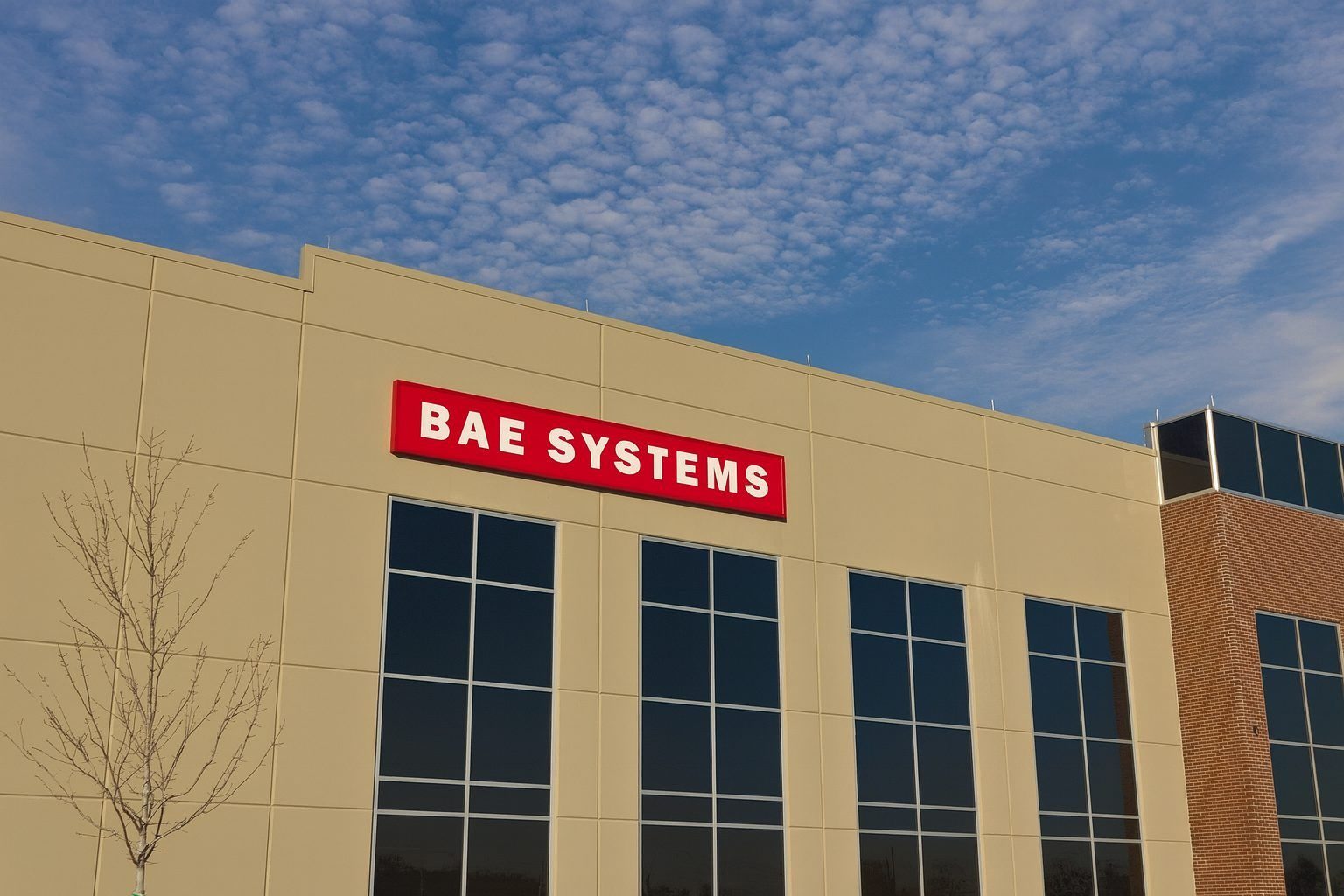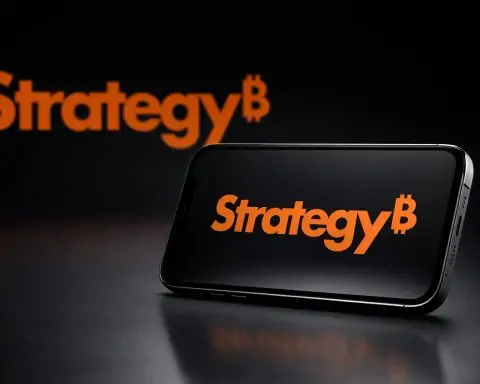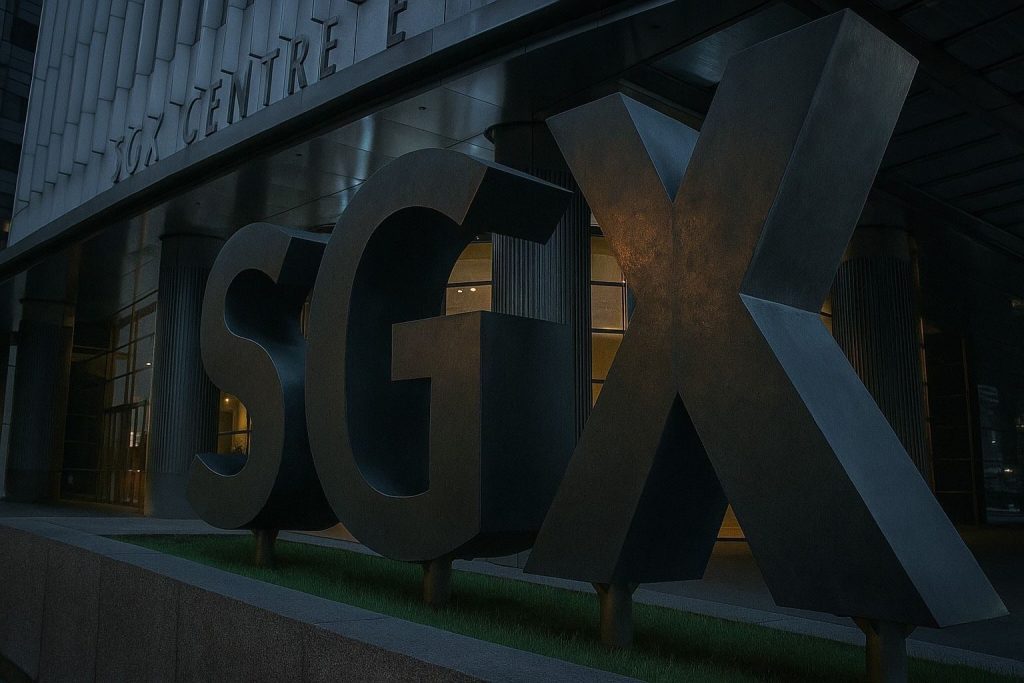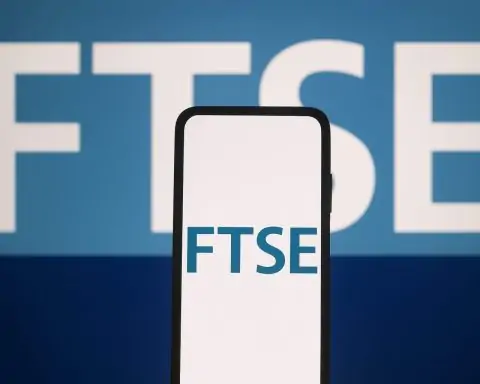BAE Systems plc (LON: BA., ticker BA.) remains firmly in the spotlight today, 26 November 2025, after a flurry of contract news, an ongoing share buyback programme and renewed debate over whether the UK defence champion’s share price still has room to run.
BAE Systems share price today: modest rise after sharp pullback
BAE Systems shares closed around 1,638p on the London Stock Exchange on 26 November, up just over 1% on the day, giving the company a market capitalisation of roughly £47.8bn. [1]
Over the past year, the stock has been one of the standout performers in the FTSE 100. Data from MarketScreener shows the shares are still up around 43% year‑to‑date, even after a recent bout of volatility. [2]
A new analysis from Simply Wall St, published today, notes that BAE Systems’ share price has fallen about 13% over the last month following a strong run earlier in 2025. Even so, it estimates a “fair value” of £21.35 per share versus a recent close around £16.20, implying the stock could be trading at roughly a 24% discount to its intrinsic value based on their model. [3]
In other words, the recent pullback may be more of a breather than a reversal, at least in the eyes of some valuation models.
Kalkine Media also highlighted BAE Systems today in a feature on FTSE 100 valuation dynamics, emphasising the group’s role as a core UK industrial and defence heavyweight with multi‑domain capabilities spanning combat air, naval systems, armoured vehicles, electronics and cyber. [4]
Fresh US Navy contract strengthens maritime franchise
The most eye‑catching operational development in the last 24 hours is a new US Navy contract for BAE Systems’ missile canisters.
An article on ADS Advance today confirms that BAE Systems has been awarded a $22 million contract by the US Navy to produce missile canisters for the Mk 41 Vertical Launching System (VLS), with the total value potentially rising to $317 million if all options are exercised. [5]
Key points from the deal:
- Base value: $22m
- Potential maximum: Up to $317m including options
- Scope: Production of Mk 41 VLS canisters and continued manufacture of Mk 29 missile canisters
- Platforms: Used on US Navy and allied surface ships for missiles such as Tomahawk, Standard Missile variants, Evolved SeaSparrow and anti‑submarine rockets [6]
- Locations: Manufacturing centred on BAE’s facility in Aberdeen, South Dakota, with engineering support from Minneapolis [7]
The contract builds on a previous Mk 41 canister award worth about $738m announced in July, underlining BAE Systems’ position as the Navy’s long‑standing partner for these launch systems. [8]
For investors, the deal reinforces three themes:
- Deep US exposure: Nearly half of BAE Systems’ revenue already comes from the United States. [9]
- Mission‑critical hardware: The company supplies hardware that directly underpins front‑line naval capability, making it structurally important to defence customers.
- Visibility of future cashflows: Multi‑year contracts with option structures can help smooth revenue and support long‑term planning.
Hunter-class frigates: Ultra Maritime chosen for torpedo defence
In the Indo‑Pacific, BAE’s Australian shipbuilding programme also generated headlines today.
A report from Maritime Fairtrade confirms that BAE Systems Maritime Australia has selected Ultra Maritime to supply the Surface Ship Torpedo Defence (SSTD) system for the Royal Australian Navy’s Hunter-class frigates. [10]
According to the report:
- The SSTD package adds advanced acoustic detection and decoy technology to protect the frigates against torpedo threats.
- The system can recommend tactical manoeuvres, such as sharp turns or zig‑zag patterns, to evade incoming torpedoes. [11]
- Ultra Maritime, based in Mawson Lakes, South Australia, is already providing the Bow Sonar for the Hunter programme, giving it a central role in the ships’ anti‑submarine warfare suite. [12]
BAE Systems’ own executives have previously framed the Hunter‑class as critical to protecting Australian coastal waters, key shipping lanes and undersea cables, and the new SSTD selection strengthens that narrative of high‑end sovereign capability. [13]
Strategically, the move:
- Deepens BAE’s ties with Australia’s domestic defence supply chain
- Aligns with AUKUS ambitions around undersea warfare
- Reinforces BAE’s positioning as a lead integrator of complex naval combat systems in the Indo‑Pacific
Cyber protection for CV90s: yesterday’s deal still in focus
While technically dated 25 November, a Nordic defence press release that hit the wires yesterday remains highly relevant for today’s BAE coverage.
Swedish cybersecurity specialist Clavister announced a 26 MSEK (c. SEK 26m) follow‑on order under its agreement with BAE Systems Hägglunds. The contract covers further integration of Clavister’s CyberArmour solution into CV90 infantry fighting vehicles operated by a Nordic nation. [14]
The deal highlights:
- The growing importance of cyber and electronic protection inside armoured vehicles
- The role of BAE Systems’ Hägglunds unit as the OEM for the CV90 platform
- How BAE’s land systems business is increasingly intertwined with European cyber‑defence specialists
Although this revenue is more material for Clavister than for BAE in absolute terms, it reinforces the message that BAE platforms increasingly come bundled with sophisticated cyber resilience capabilities.
Continuous share buybacks: latest “transaction in own shares” RNS
On the capital allocation side, BAE Systems continued to shrink its share count this week.
A Regulatory News Service (RNS) statement released this morning (and carried by Sharecast) confirms that, under the second tranche of its share repurchase programme, BAE Systems purchased 100,719 ordinary shares for cancellation on 25 November 2025. [15]
Key details from the announcement:
- Number of shares repurchased: 100,719
- Price range: Highest price 1,663.5p, lowest 1,619.0p
- Volume‑weighted average price:1,643.25p
- Purpose: Shares to be cancelled, reducing the share count rather than being held in treasury [16]
The RNS also notes that, within the second tranche of the buyback that began in July 2025, the company has now repurchased 12,774,068 shares at a volume‑weighted average price of approximately 1,831.06p per share. [17]
Combined with a growing ordinary dividend – the interim dividend for 2025 is set at 13.5p per share, up from 12.4p a year earlier [18] – the buyback underscores BAE’s increasingly shareholder‑friendly capital return policy. For long‑term investors, fewer shares in issue generally mean that, all else equal, earnings per share (EPS) and dividends per share can grow faster than total profits.
Fundamental backdrop: order book, guidance and sector tailwinds
Today’s moves come against a backdrop of strong underlying momentum.
In a market update on 12 November 2025, BAE Systems reported: [19]
- Strong operational and financial performance, supporting full‑year guidance
- Over £27bn of order intake already secured so far this year
- Continued “active discussions” with customers as defence budgets rise across NATO and key allies
Simply Wall St’s piece today also points to a £75bn order backlog and notes that rising defence spend in the UK, Europe, the US and Indo‑Pacific regions provides multi‑year revenue visibility. [20]
Together, these dynamics help explain why:
- Some analysts see BAE Systems as undervalued, even after a near‑50% year‑to‑date rally cited by outlets such as The Motley Fool UK, which argues the share price could plausibly move another 20% higher based on broker forecasts. [21]
- Others focus less on short‑term price targets and more on BAE’s status as a core FTSE 100 defence and engineering play, as highlighted in the Kalkine Media valuation focus article today. [22]
At the same time, both company statements and independent analysis stress that there are risks:
- Very strong share price performance has pushed valuations up from pre‑2022 levels.
- Future order intake still depends on political decisions and long‑term budget priorities.
- Any easing in geopolitical tensions or delays in procurement could affect sentiment.
How today’s news fits the BAE Systems investment story
Pulling today’s developments together, a few themes stand out for readers tracking BAE Systems:
- Reinforcing core franchises
- Expanding digital and cyber layers
- The CV90 CyberArmour order with Clavister emphasises that combat vehicles are now software‑ and network‑intensive platforms, not just hardware. [25]
- Disciplined capital returns
- Daily “transaction in own shares” RNS updates confirm the buyback is not just a headline but an ongoing mechanism for returning surplus cash. [26]
- Valuation debate is alive and well
- With the share price off recent highs yet still far above pre‑2022 levels, investors are split between those who see further upside thanks to the order book, and those who worry about how long the current defence‑spending super‑cycle can last. [27]
What investors will watch next
Looking beyond today’s news, several upcoming milestones and themes are likely to shape how the market views BAE Systems:
- Q4 and full‑year 2025 results: MarketScreener’s calendar lists BAE’s Q4 2025 earnings release for 18 February, which should give more detail on margins, cash generation and order intake. [28]
- Progress on major programmes: Investors will be keen for updates on combat air (including Tempest and the Global Combat Air Programme), submarines, and export campaigns in Europe, the Middle East and Asia‑Pacific. [29]
- Defence budget trajectories: Any significant shift in NATO members’ spending commitments, or US budget negotiations, could feed into longer‑term revenue expectations.
For now, however, 26 November 2025 finds BAE Systems in a familiar position: winning high‑profile contracts, returning cash via buybacks and dividends, and sitting at the centre of the global conversation about defence spending, industrial capability and security.
This article is for informational purposes only and does not constitute investment advice. Always do your own research and consider speaking to a qualified financial adviser before making investment decisions.
References
1. www.hl.co.uk, 2. in.marketscreener.com, 3. simplywall.st, 4. kalkinemedia.com, 5. www.adsadvance.co.uk, 6. www.adsadvance.co.uk, 7. www.adsadvance.co.uk, 8. in.marketscreener.com, 9. in.marketscreener.com, 10. maritimefairtrade.org, 11. maritimefairtrade.org, 12. maritimefairtrade.org, 13. maritimefairtrade.org, 14. nordicdefencesector.com, 15. www.sharecast.com, 16. www.sharecast.com, 17. www.sharecast.com, 18. www.hl.co.uk, 19. www.stockopedia.com, 20. simplywall.st, 21. www.fool.co.uk, 22. kalkinemedia.com, 23. www.adsadvance.co.uk, 24. maritimefairtrade.org, 25. nordicdefencesector.com, 26. www.sharecast.com, 27. simplywall.st, 28. in.marketscreener.com, 29. www.baesystems.com










